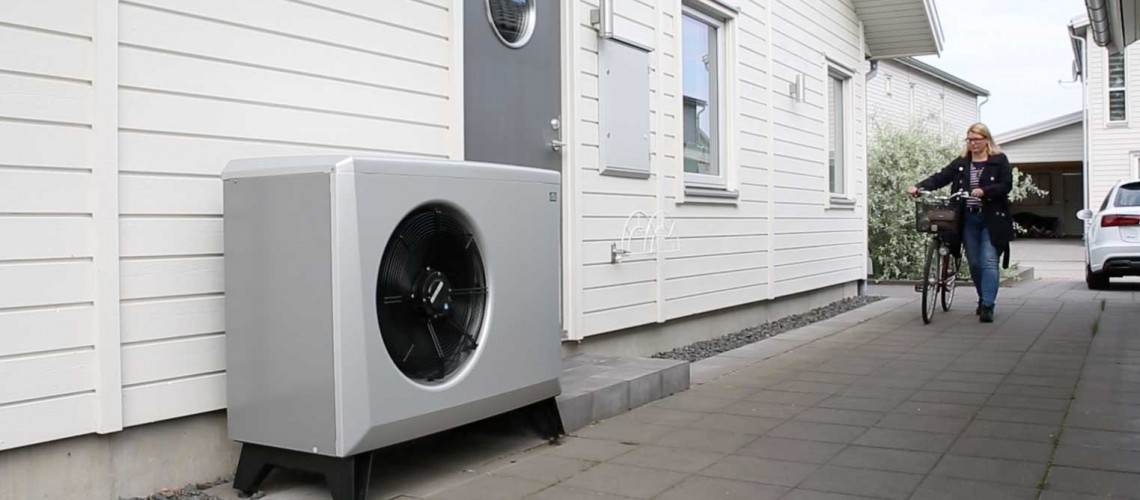
How an air-to-water heat pump works
Installing an air-to-water heat pump is a relatively simple process. But the technology behind it is truly innovative. Here, we do our best to explain how an air-to-water heat pump actually works.
The ingenuity of an air-to-water heat pump lies in the fact that it makes use of renewable solar energy in outdoor air and transfers it to the water-based heating system in the property. This is how the heat pump transforms outdoor air into hot shower water and heated radiators.
An air-to-water heat pump usually consists of two parts: an indoor module and an outdoor unit.
Outdoor unit
1. The heating process begins in the heat pump's outdoor unit, which is placed outside the house. A fan in the unit draws outdoor air into the heat pump.
2. The refrigerant contained in the heat pump's closed system plays a key role. All machines that carry heat from cool to warm areas, such as refrigerators and air conditioning, contain refrigerant. In this case, the refrigerant consists of a colourless gas with a boiling point far below zero.
3. The refrigerant is exposed to different pressures and temperatures in the closed system. It is a way of harnessing and pushing the limits of the laws of thermodynamics. Energy can neither be created nor destroyed — it can only change form.
4. When the refrigerant is subjected to pressure created by the heat pump compressor, the temperature increases considerably and, by means of the heat pump's condenser, the hot gas that forms can be used to heat the water. The process requires a supply of electricity—to power the compressor and fan, for instance—but it is only a fraction of the thermal energy that is provided.
Indoor module
5. The heated water is transported to the indoor module inside the property, and is used in showers, taps, radiators and/or floor heating. At the same time, the refrigerant in the heat pump reverts to liquid form and can be reused in the process.
Summarised simply, the heat pump takes thermal energy from the outdoor air and concentrates it. It is then used to heat your home and supply you with hot water.
With an air-to-water heat pump from CTC, you can reduce your heating costs by up to 75 percent. The amount you will save depends on the size of your house, the part of the country in which you reside, and which heat pump you choose.
It is therefore not all that surprising that heat pumps are becoming increasingly popular. Statistics from the Swedish Energy Agency show that the number of single-family homes using a heat pump has increased about 75 percent in Sweden between 2009-2022. At that time, 754,000 single-family homes had a heat pump: In 2022, that figure is 1,328,000.
Updated: 2025-09-11
Published: 2022-02-20
 Ground source heat pumps
Ground source heat pumps
 Air-to-water heat pumps
Air-to-water heat pumps
 Indoor modules
Indoor modules
 Ventilation solutions
Ventilation solutions
 Control for CTC heat pumps
Control for CTC heat pumps
 Hot water heaters
Hot water heaters
 Accumulator tanks
Accumulator tanks
 Electric heating
Electric heating
 Accessories
Accessories

